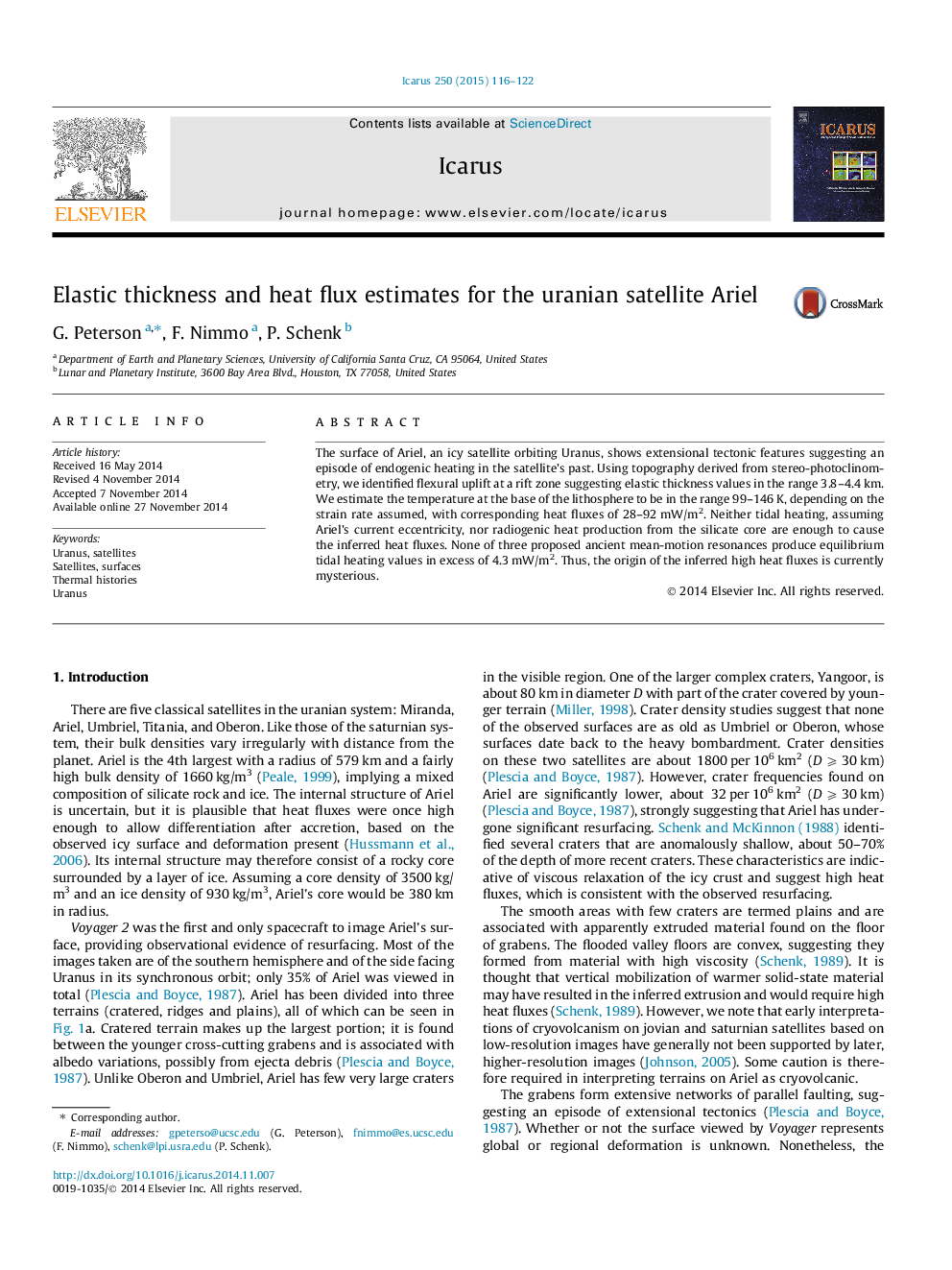| Article ID | Journal | Published Year | Pages | File Type |
|---|---|---|---|---|
| 8136714 | Icarus | 2015 | 7 Pages |
Abstract
The surface of Ariel, an icy satellite orbiting Uranus, shows extensional tectonic features suggesting an episode of endogenic heating in the satellite's past. Using topography derived from stereo-photoclinometry, we identified flexural uplift at a rift zone suggesting elastic thickness values in the range 3.8-4.4Â km. We estimate the temperature at the base of the lithosphere to be in the range 99-146Â K, depending on the strain rate assumed, with corresponding heat fluxes of 28-92Â mW/m2. Neither tidal heating, assuming Ariel's current eccentricity, nor radiogenic heat production from the silicate core are enough to cause the inferred heat fluxes. None of three proposed ancient mean-motion resonances produce equilibrium tidal heating values in excess of 4.3Â mW/m2. Thus, the origin of the inferred high heat fluxes is currently mysterious.
Related Topics
Physical Sciences and Engineering
Earth and Planetary Sciences
Space and Planetary Science
Authors
G. Peterson, F. Nimmo, P. Schenk,
